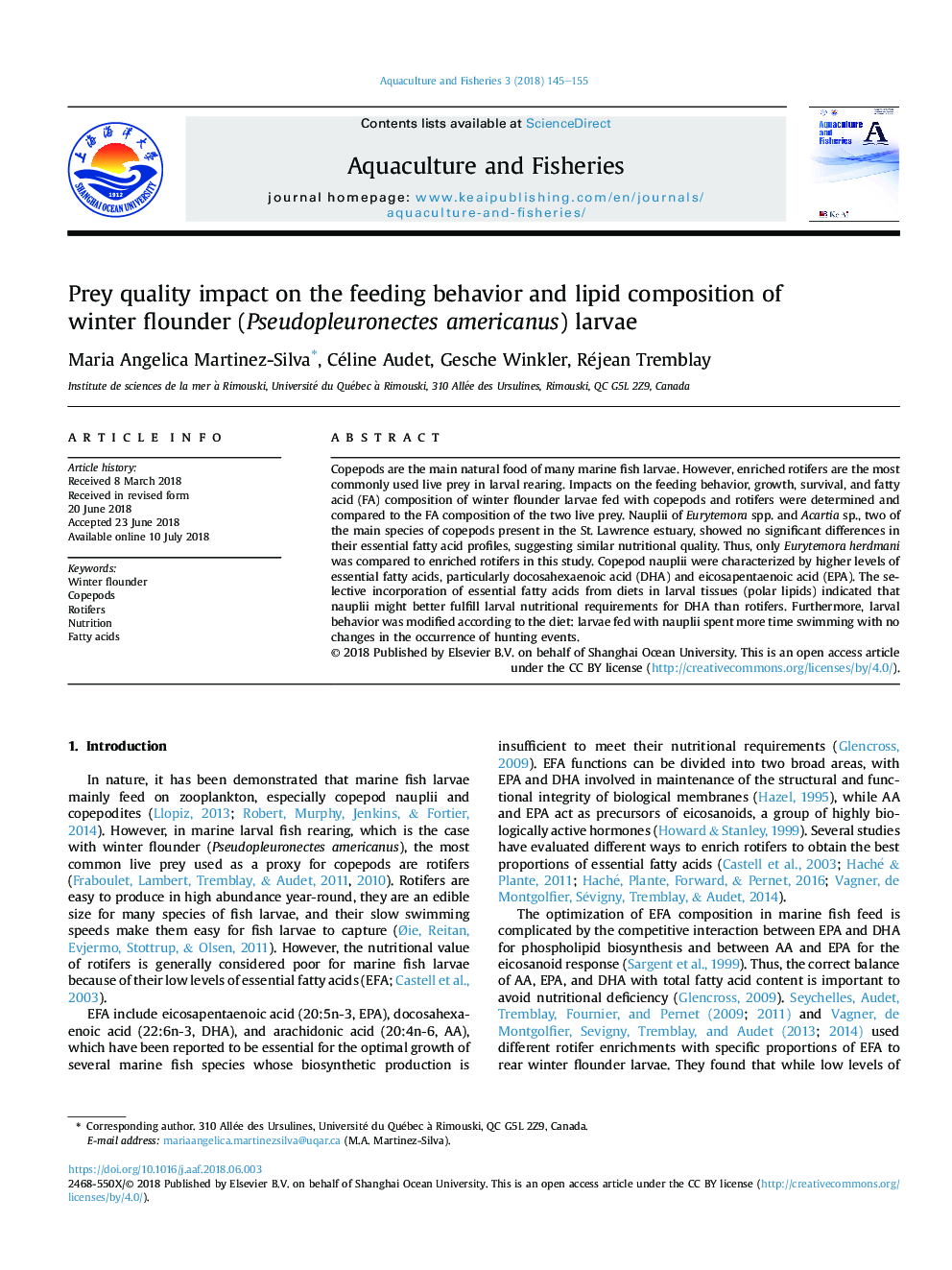| Article ID | Journal | Published Year | Pages | File Type |
|---|---|---|---|---|
| 8919971 | Aquaculture and Fisheries | 2018 | 11 Pages |
Abstract
Copepods are the main natural food of many marine fish larvae. However, enriched rotifers are the most commonly used live prey in larval rearing. Impacts on the feeding behavior, growth, survival, and fatty acid (FA) composition of winter flounder larvae fed with copepods and rotifers were determined and compared to the FA composition of the two live prey. Nauplii of Eurytemora spp. and Acartia sp., two of the main species of copepods present in the St. Lawrence estuary, showed no significant differences in their essential fatty acid profiles, suggesting similar nutritional quality. Thus, only Eurytemora herdmani was compared to enriched rotifers in this study. Copepod nauplii were characterized by higher levels of essential fatty acids, particularly docosahexaenoic acid (DHA) and eicosapentaenoic acid (EPA). The selective incorporation of essential fatty acids from diets in larval tissues (polar lipids) indicated that nauplii might better fulfill larval nutritional requirements for DHA than rotifers. Furthermore, larval behavior was modified according to the diet: larvae fed with nauplii spent more time swimming with no changes in the occurrence of hunting events.
Related Topics
Life Sciences
Agricultural and Biological Sciences
Aquatic Science
Authors
Maria Angelica Martinez-Silva, Céline Audet, Gesche Winkler, Réjean Tremblay,
